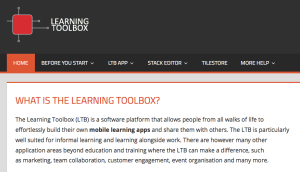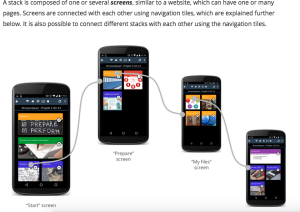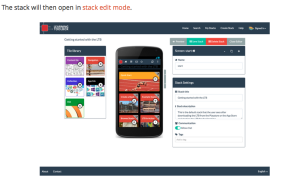My journey with the VETNET network – Part One: The early years
Normally I have participated in August or September in the European Conference on Educational Research (ECER) – the annual conference of the European Educational Research Association (EERA). This year I have to stay out because of health issues. This is bitter, because in ECER 2016 we will celebrate the 20th anniversary of the founding of VETNET – the European Vocational Education and Training Research Network. In order to contribute to the celebrations I have decided to write a series of blogs on my journey with ECER and VETNET – starting from the year 1992 and ending with the present date. Please note that this is not meant to be an ‘official history’ document of the network – these are my reflections on my individual experiences as a network member from the very beginning.
ECER 1992 in Enschede: Pilot ECER before founding of the EERA
In 1992 the University of Twente had the responsibility to organise the annual Dutch conference on educational research conference (Onderwijsresearchdag). However, the organisers decided to open the conference for wider European participation and to arrange it as an English-speaking event. This was the start of the European Conference on Educational Research (ECER). The strand ‘Vocational and Professional Education’ (with keynotes by David Raffe and Frank Achtenhagen) was one of most popular ones – the VETNET community started to get together. I participated as a young researcher from peripheral Finland – not yet a member of the European Union – with a comparative analysis of vocational education and training (VET) reforms in six European countries (Finland, Sweden, Norway, Denmark, Germany and the Netherlands).
During the preparation of the pilot ECER the Dutch organisers tried to prepare the grounds for setting up a European umbrella organisation for educational researchers – based on the model of the American Educational Research Association (AERA). However, at that point the time was not ripe for the decision – some more time was needed.
IRNETD 1994 in Milano: Pilot VETNET event before founding of the network
In the next years the VET research group of the University of Twente started cooperation with the American-based Academy of Human Resource Development (AHRD) to explore an alternative option for internationalisation of research in VET and HRD. This led to the initiative to create an umbrella network IRNETD (International Research Network on Education, Training and Development) and to organise the launching conference in Milano in June 1994 (hosted by Associazione Italiana Formatori – AIF). (I participated this time only as an observer because I had just started in Cedefop, see below.)
Regarding European networking in VET research, the conference itself was clearly a step forward from Enschede 1992. But the designed follow-up by launching a major network was given up due to practical difficulties. Yet, the experience with this conference paved the way for the VETNET community to come up.
Interim developments in 1994 – 1996
In the meantime the idea of setting up a joint European organisation for educational researchers had been accepted and the European Educational Research Association (EERA) was founded in 1994 as the umbrella organisation for national associations in this field. The first ECER under the auspices of EERA was organised in 1995 by the University of Bath co-located with the national conference of the British association BERA. (I couldn’t participate because I was just moving with Cedefop from Berlin to Thessaloniki, see below.)
By the second ECER conference the EERA council had adopted a policy to set up thematic networks to manage respective sections of the ECER. At that time Martin Mulder – a key actor in the above mentioned conferences and the representative of the Dutch national association in the EERA council) took the initiative to set up an EERA network for VET researchers. He contacted member associations to get nominations for a founding board and submitted a proposal that was accepted by the EERA council.
I myself had started in June 1994 (two weeks before the ITNETD conference as a national seconded expert at Cedefop (the European centre for the development of vocational training). Therefore I was not in the position to prepare a paper – yet I could report on the emerging community development in VET research. In 1995 I got a job a project manager job in Cedefop (as temporary official of the European Union – with tasks related to European research cooperation in VET). Due to the fact that Cedefop was being relocated from Berlin to Thessaloniki, Greece, I couldn’t participate in ECER 1995. (The conference took place just when the move was implemented.)
ECER 1996 in Sevilla: The start of VETNET under the auspices of EERA
Whilst the EERA council had already adopted the policy to set up thematic networks, they were not yet established by the time that ECER 1996 took place in Sevilla. Therefore, there was no clear thematic strand for VET research. Instead, most of the contributions of VET researchers were placed in parallel sessions in the morning sessions – which left the afternoons open as ‘creative spaces’ for improvised workshops. I participated with a Cedefop-initiated symposium on accompanying research and as a discussant in a symposium of the Europrof project. Thus, already at this conference we could witness the entry of trans-national projects and their symposia or workshops into ECER.
A clear highlight for VET researchers was the General Assembly to launch the VETNET network. Martin Mulder invited the participants to announce the official start of VETNET as the Network 2 of EERA. Most of the participants in VET-related sessions attended and welcomed the initiative that was considered as a major step forward. From now on we could see that the community was taking shape and that we had a common framework under the auspices of EERA.
– – –
I think this is enough of the early years. After the pilot initiatives there was a clear course forward to develop the common umbrella network VETNET within EERA and ECER. In the next post I will report on the shaping of VETNET during the founding years.
More blogs to come …



